
Lot 16
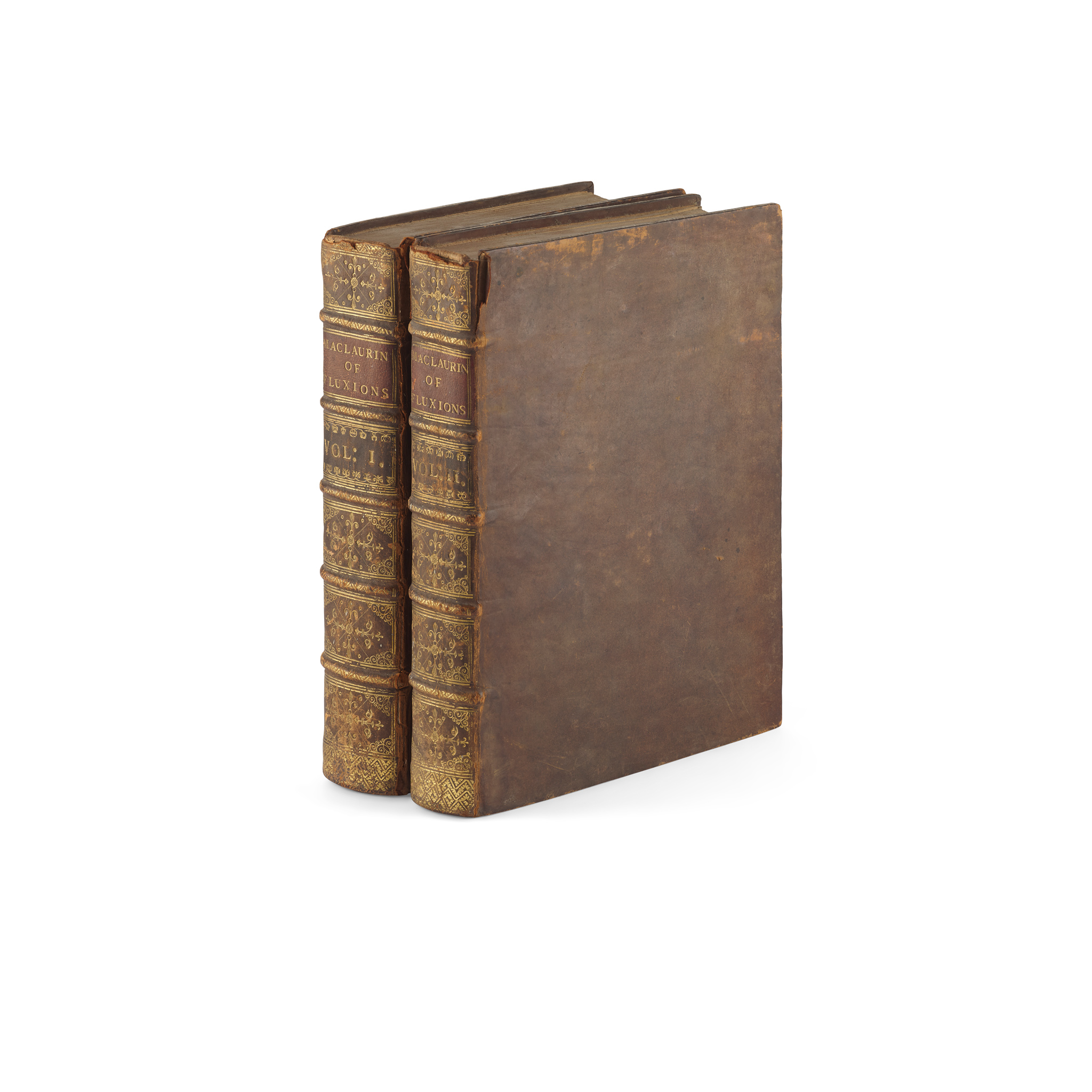
Maclaurin, Colin
A Treatise of Fluxions
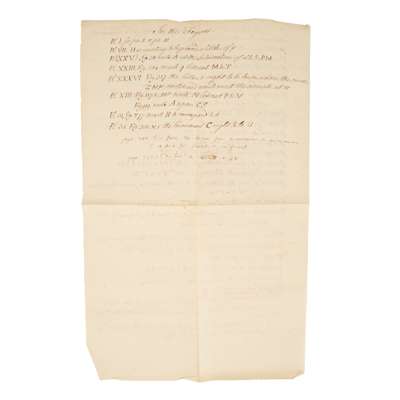
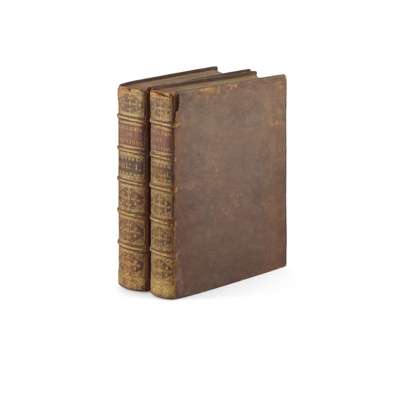
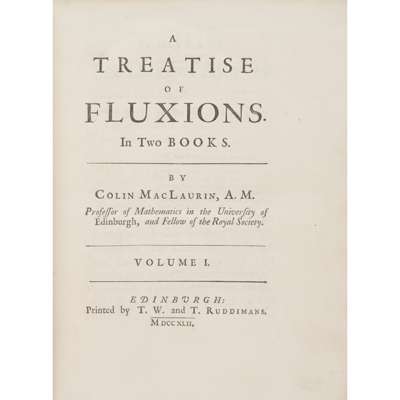
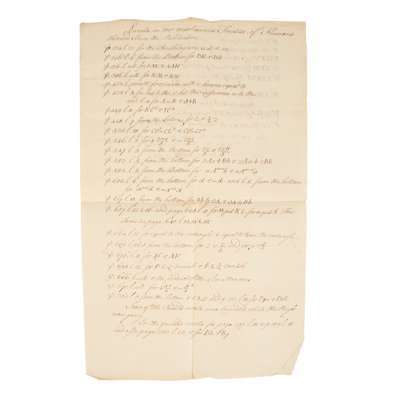



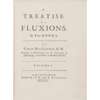
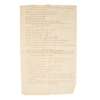
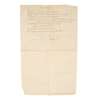
The Library of James Stirling, Mathematician
Auction: 23 October 2025 from 13:00 GMT
Description
In Two Books. Edinburgh: printed by T. W. and T. Ruddimans, 1742. 2 volumes, 4to (23.4 x 17.4cm), contemporary sprinkled calf, spines gilt in compartments, red morocco labels, [7] ii-vi 412, [2] 413-761 pp., half-title to volume 1, 41 engraved folding plates (numbered 1-40: number 25 duplicated), laid-in manuscript errata (single foolscap sheet, 37 x 22.6cm, written on both sides, headed ‘Errata in Mr Maclaurin’s Treatise of Fluxionis observed since the Publication', containing some 30 corrections, folded), volume 1 p. 302 with an equation partly crossed through in ink, volume 2 p. 413 with manuscript correction to margin, both volumes with a little loss to head of each spine and front joint, volume 1 front joint superficially cracked [ESTC T93640; Norman 1408]
Footnote
First edition of Maclaurin's ‘magnum opus’ (ODNB), with a laid-in manuscript list of errata, written principally in a bold clerical hand but with three errata added to the verso apparently in the author's. The paper on which this copy is printed is notably thick and the dimensions similar to those of a presentation copy to the Earl of Hopetoun (23.2 x 17.7cm), which was catalogued as a ‘large and thick paper copy’ and also contained a manuscript list of errata (Christie's, 12th September 2020). The Hopetoun family were the owners of the mines at Leadhills, where James Stirling spent his later career. 'Maclaurin placed great reliance upon Stirling's judgment, and frequently consulted him while engaged in writing his Treatise of Fluxions' (Tweedie, James Stirling: A Sketch of his Life and Works along with his Scientific Correspondence, 1922, p. 15).
A Treatise of Fluxions was ‘the earliest logical and systematic publication of the Newtonian methods’ (DSB). Maclaurin's intention was to silence Newton's critics, notably George Berkeley. 'His emphasis on Newtonian geometry was very influential, and diverted attention from the analytical methods being formulated on the Continent' (Norman).









